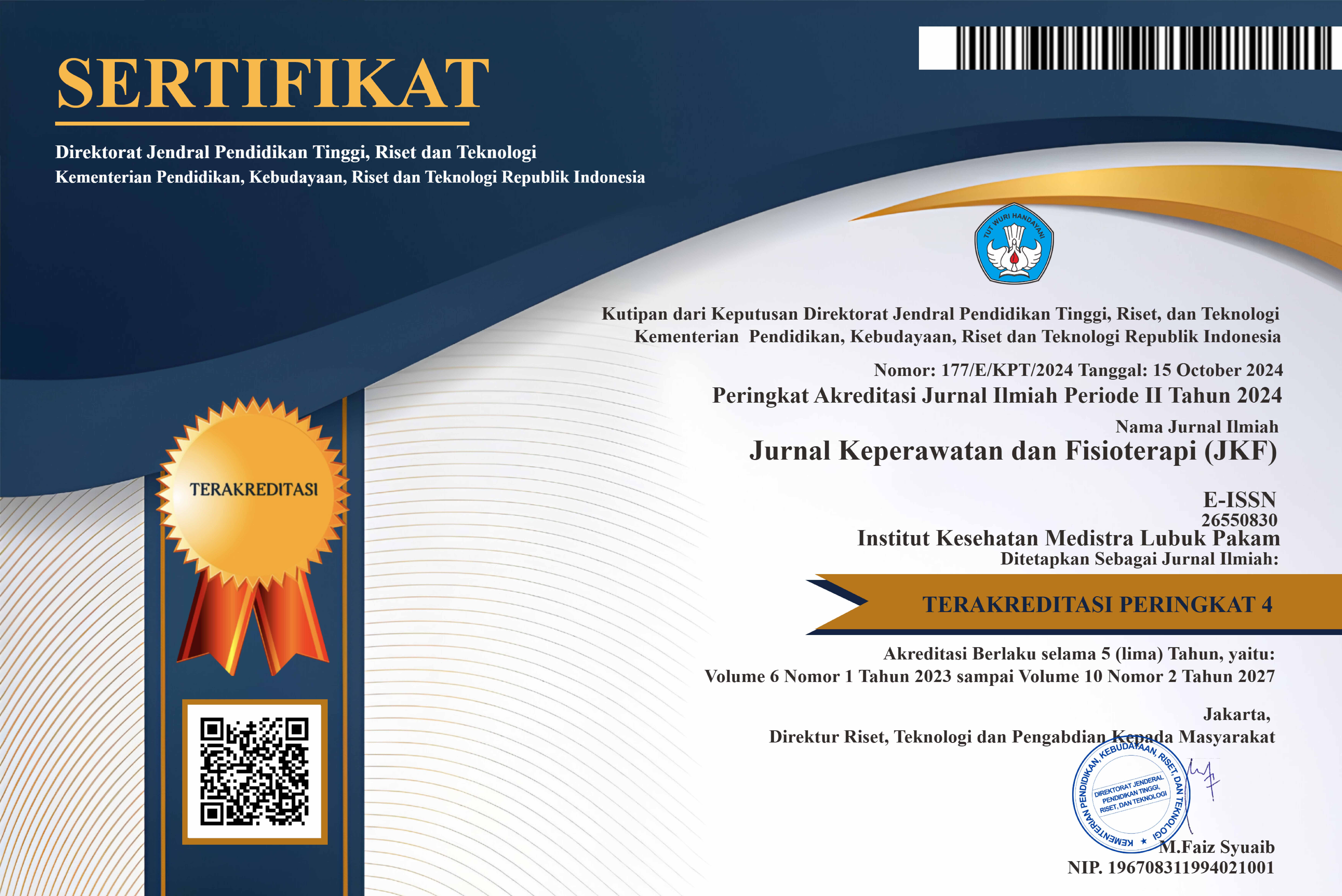Factors Affecting Couple of Word of Word in Choosing Contraception Implant in The Working Area of The Health Center Puskesmas Gonting Malaha Tahun 2022
DOI:
https://doi.org/10.35451/jkf.v5i2.1500Keywords:
Knowledge factor, Education, parity, Contraceptive implantAbstract
Some married couples have difficulty in choosing a family planning method. The low interest in MKJP is influenced by individual perceptions of threats and considerations of profit and loss. Individual perceptions are influenced by factors, namely age, education, knowledge, number of children, exposure to information sources and economic conditions. The purpose of this study was to determine the factors that influence couples of childbearing age in choosing implant contraceptives. This research method is analytic using cross sectional analysis. The number of samples in this study was 20 people. The tools used in the study used a statement questionnaire and the respondent's personal data listed in the questionnaire. The results of the analysis showed that the knowledge factor had an influence on the choice of implant contraception with a p-value of 0.007 < 0.05. Educational factors have an influence on the choice of contraceptive implants with a p-value of 0.013 < 0.05. The parity factor has an influence on the choice of contraceptive implant with a p-value of 0.032 < 0.05. Most of human knowledge is obtained through the sense of sight and the sense of hearing. One of the factors that influence the use of contraception is knowledge. Limited knowledge will affect the mother's choice of contraceptive methods. Correct knowledge about family planning programs, including about various types of contraception, will enhance community participation in family planning programsIn conclusion, couples of childbearing age who choose to use implant contraceptives are generally influenced by factors of knowledge, education and parity.
Downloads
References
Abdul Kadir, dkk. 2012.Dasar-dasar Pendidikan. Jakarta: Kencana Prenada Media Group
Affandi, F.A., Wijaya, C.H., Faridah, D.N., dan Suyatma, N. E. 2019. Hubungan antara kandungan karbohidrat dan Indeks Glimek pada Pangan Tinggi Karbohidrat. PANGAN. Vol. 28 No. 2.
Arminia, N, K. A. et al. 2016. Buku Ajar Keperawatan Maternitas 2. Surabaya: Fakultas Keperawatan Universitas Airlangga.
Bernadus, Johana D, Agnes Madianung. 2013. Faktor-Faktor Yang Berhubungan Dengan Pemilihan Alat Kontrasepsi Dalam Rahim (AKDR) Bagi Akseptor KB Di Puskesmas Jailolo. Jurnal e-NERS (eNS) Volume 1. Hal 1-10. http://ejournal.unsrat.ac.id/ diakses 1 Februari 2018.
BKKBN, Kementerian Kesehatan RI 2016, Pilihan Kontrasepsi Untuk Masyarakat Umum, Jakarta, BKKBN
Handayani, S. R. (2019). Dokumentasi Kebidanan: Bahan Ajar Kebidanan
Indiarti dan Wahyudi. (2016). Asuhan Kebidanan Kehamilan Normal. Jakarta. Surya Pratama.
Kadir, A. 2012. Hubungan Paritas dan Pekerjaan Akseptor dengan Pemakaian Kontrasepsi Implant di BPS Kresna Hawati Kel. Karang Jaya Palembang. Poltekkes Kemenkes Palembang.
Marliza, Anantasia. 2013. Faktor-faktor yang mempengaruhi Rendahnya minat Ibu untuk memilih implant sebagai Alat Kontrasepsi di Kelurahan Terjun Kecamatan Medan Marelan. Universitas Pasir Pengairan.
Majid, A. (2019). Faktor-Faktor Yang Berhubungan Dengan Program Keluarga Berencana Di Kabupaten Gowa. Al-Sihah : Public Health Science Journal, 11(2), 156–168
Notoatmodjo, S. 2017. Metode Penelitian Kesehatan. Jakarta: Rineka Cipta.
Nurjanah SN, Susanti E. (2017). Determinan kejadian drop out penggunaan kontrasepsi pada pasangan usia subur (PUS) di kabupaten kuningan. 2017;1–10.
Samekto, Bambang. 2018. Peranan Agama dalam program KB Nasional. % 1 DVLRQDO¥ http://pustaka.bkkbn.go.id/index.php?option=com_content&task=view&id=109&Itemid=9. Diakses pada 5 Mei 2020
Sari, EI, 2016. Faktor-faktor yang Berhubungan dengan Rendahnya minat Ibu terhadap Penggunaan Metode Kontrasepsi Jangka Panjang di BPS Sri Romdhati Semin Gunung Kidul. Universitas Aisiyah Yogyakarta
Downloads
Published
Issue
Section
License
Copyright in each article is the property of the Author.


























